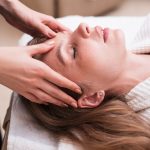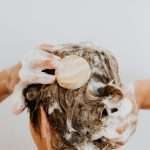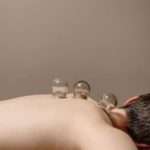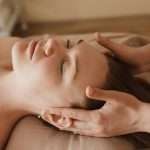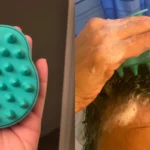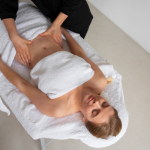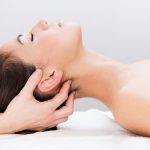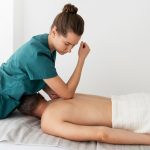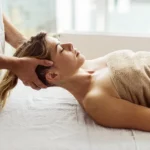Are you looking for an effective way to improve your scalp’s circulation? Massaging your scalp is an easy and natural way to improve the blood circulation in your scalp. This article will provide you with a step-by-step guide on how to massage scalp for improved blood circulation. Learn how to use the right techniques and tools to get the most out of your scalp massage. With just a few simple steps, you can help your scalp get the blood flow it needs to stay healthy and strong.
Benefits of Massaging Scalp for Blood Circulation
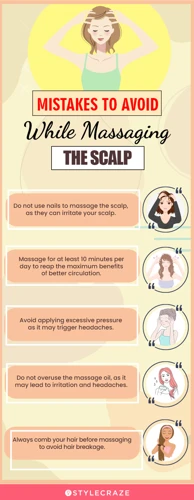
Massaging scalp can be a great way to improve circulation and promote healthy hair growth. It has numerous health benefits, including:
| Benefits | Description |
|---|---|
| Stimulates Hair Growth | Massaging the scalp can help stimulate blood flow to the follicles, which in turn can promote hair growth. |
| Relieves Stress | A scalp massage can help to relax the body and mind, reducing stress and tension. |
| Improves Circulation | Massaging the scalp increases circulation and can help to improve the health of the scalp and hair. |
| Reduces Dandruff | By improving circulation and stimulating the scalp, massaging can help reduce dandruff caused by dryness. |
| Promotes Relaxation | Scalp massages can help to promote relaxation, ease headaches and migraines, and even help with insomnia. |
Massaging the scalp is a simple and natural way to improve blood circulation and promote healthy hair growth. It is an inexpensive and relaxing way to improve the overall health of the scalp and hair.
Preparation
Before starting a scalp massage, it is essential to prepare your hair and scalp for the massage. This includes washing your hair with a mild shampoo and conditioning it to ensure that the scalp is clean and free from any dirt or product buildup. After washing, brush or comb your hair to detangle any knots. This will make it easier to massage your scalp. When you are done combing your hair, towel dry it and apply a scalp massage oil. This oil helps to lubricate your scalp and will make it easier to massage. Make sure to use a gentle massage oil that is suitable for your hair type to prevent any irritation or damage. Finally, you should use your fingers to gently massage your scalp for a few minutes to help loosen up any tension or knots in your scalp.
Step-by-Step Guide
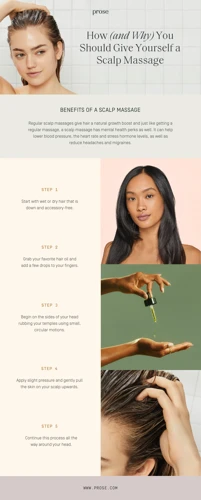
Start at the Nape of the Neck
Using your fingertips, massage the nape of the neck in a circular motion. Focus on lightly pressing and kneading the scalp to improve circulation and promote relaxation.
Work Around the Ears
Work your way around the ears, massaging the scalp in circular motions. Keep the pressure light, and avoid tugging or pulling on any hair.
Massage the Hairline
Move your fingers up to the hairline. Gently massage the hairline with your fingertips, using light pressure.
Move to the Sides of the Head
Keeping your fingertips close to the hairline, move your hands to the sides of the head. Massage each side of the head in circular motions.
Work Across the Top of the Head
Using your fingertips, massage the top of your head in circular motions. Take your time and focus on gently pressing and kneading the scalp.
Finish at the Nape of the Neck
When you’ve finished massaging your scalp, return to the nape of the neck and finish with a few more circular motions.
Additional Tips
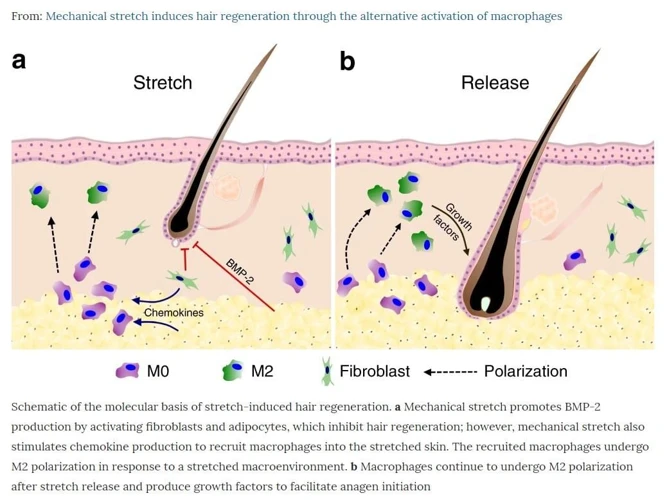
- Always use gentle strokes when massaging your scalp.
- Choose massage oils with beneficial ingredients to maximize the benefits of scalp massage.
- Be sure to massage the entire scalp, including the front, back, and sides.
- Do not massage too hard; gently massage the scalp with your fingertips.
- You can also massage the scalp with a scalp massager or brush.
- After massaging the scalp, apply a nourishing hair mask or serum to further nourish the scalp.
- It’s important to do a scalp massage regularly to ensure that the scalp is healthy and the blood circulation is good.
Precautions
- Always start with light strokes: When massaging your scalp, always start with light strokes and gradually increase the pressure. Starting with too much pressure can cause pain and discomfort and can even irritate the scalp.
- Avoid harsh massage techniques: Avoid using harsh massage techniques and heavy pressure when massaging your scalp. Doing so may damage your hair follicles and cause hair loss.
- Be gentle with your scalp: When massaging your scalp, always be gentle with it. Avoid vigorous rubbing and use only light strokes to stimulate blood flow.
- Be mindful of any allergies: Before massaging your scalp, be mindful of any allergies that you may have. Some essential oils that are used in scalp massage can cause irritation and allergic reactions in some people.
- Avoid using too much oil: When using essential oils during scalp massage, always use a small amount. Too much oil can clog pores, leading to scalp inflammation and irritation.
- Do not massage too often: Do not massage your scalp too often as this can lead to over-stimulation and irritation. Generally, two to three times a week is sufficient for most people.
Frequently Asked Questions
What type of oil should I use while massaging my scalp?
When massaging your scalp, it’s important to use an oil that will nourish your hair and skin, as well as provide lubrication for your scalp. Coconut oil, olive oil, and almond oil are all excellent choices for scalp massage. Jojoba and castor oil are also good options. Avoid using mineral oil and petroleum-based products as they can clog the pores of your scalp.
How Often Should I Massage My Scalp?
It is recommended to massage your scalp at least twice a week. Massaging your scalp more frequently can help improve blood circulation, stimulate the scalp and hair follicles, and reduce stress. However, it is important not to overdo it and to ensure that you are not applying too much pressure on your scalp.
Are There Any Risks Associated With Scalp Massage?
Yes. Scalp massage carries certain risks that should be considered before engaging in this activity. These risks include:
- Hair loss: Scalp massage can cause some hair loss, especially if done too vigorously.
- Infection: It is possible to spread fungi and bacteria from the scalp to other parts of the body.
- Transmission of skin condition: Scalp massage can spread skin conditions such as psoriasis and dermatitis.
- Allergy: Some people may be allergic to the massage oil used during scalp massage.
- Damage to the scalp: Over-vigorous massage can cause irritation and damage to the scalp.
It is important to be aware of these risks and to practice scalp massage safely and responsibly. If you are concerned about any of these risks, you should consult your doctor or a qualified massage therapist before engaging in scalp massage.
Can Scalp Massage Help With Hair Loss?
Yes. Scalp massage can help to stimulate blood circulation to the scalp and help to promote hair growth. It can also loosen built-up tension and stress, which can be a contributing factor to hair loss.
- Scalp massage increases blood flow to the hair follicles, which may help to stimulate growth.
- Massage can help to reduce stress, which can reduce hair loss.
- It can help to reduce inflammation, which can cause hair loss.
- Scalp massage can improve the health of the hair follicles, which can help to reduce hair loss.
It is important to note that scalp massage is not a miracle cure for hair loss, but it can be beneficial when combined with other treatments. If you are experiencing hair loss, it is important to visit a doctor and discuss the best treatment options for you.
Is Scalp Massage Suitable For All Hair Types?
Yes, scalp massage is suitable for all hair types. It boosts circulation and encourages healthy hair growth. It can also help to reduce inflammation and stress levels, while increasing the strength of your hair follicles. It is important to remember, however, that the pressure applied during a scalp massage should be tailored to individual hair needs.
Conclusion
Massaging your scalp can be an effective way to improve blood circulation and promote hair growth. It is simple and easy to do, and it can be done with or without the help of a massage therapist or other professional. With regular massage, you can see positive changes to the health of your scalp and hair within a few months.
References
- Mayo Clinic. (2020). Massage: Get in touch with its many benefits.
- National Center for Biotechnology Information. (2019). Scalp Massage and its Role in Hair Growth and Hair Loss.
- Wikipedia. (2020). Scalp massage


